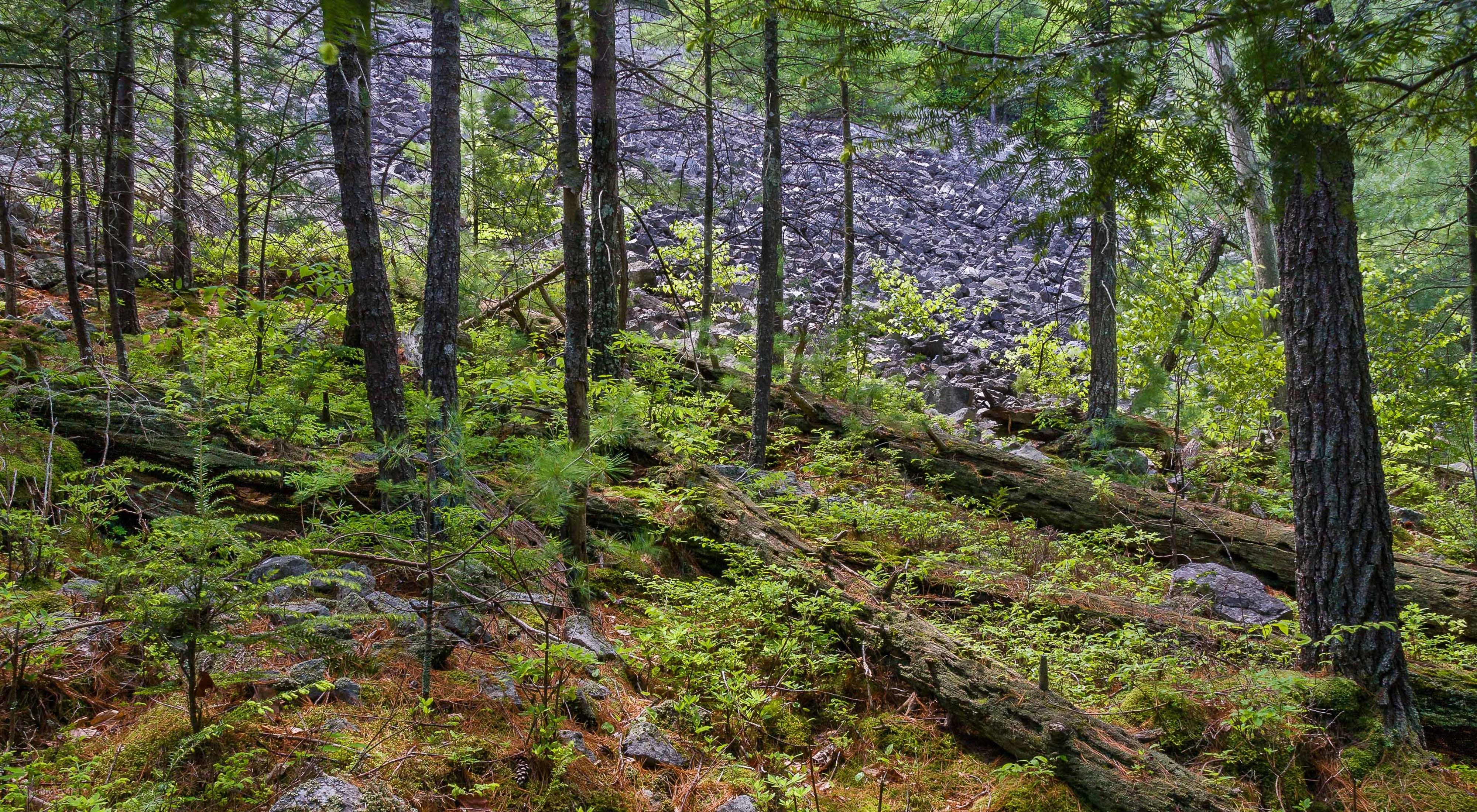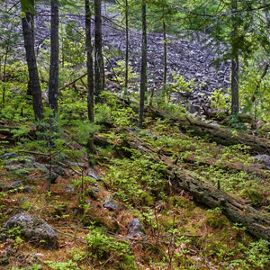Description
For generations of North River Mills residents, summertime meant weekend pilgrimages to Ice Mountain. There, at the rocky base, they’d chip off chunks of ice to cart home as the critical ingredient in fresh, homemade ice cream and chilled lemonade.
Ice Mountain gets its name from the refrigeration effect that takes place inside its talus—a sloping mass of boulders at the foot of a mountain. In cooler months, dense, cold air sinks deep into the talus, and ice masses form inside. As the weather warms up, the cooler air flows out of vents among the rocks at the bottom of the slope. It’s here, at the foot of the mountain, that many local children would eagerly gather ice.
What We’re Doing
- Working with volunteers to control invasive non-native plants, such as tree-of-heaven, garlic mustard and Japanese stillgrass, which compete with the preserve’s native and rare plants.
- Partnering with the US Forest Service and West Virginia Department of Agriculture to prevent the death of hemlocks (which shade and cool the ice vents) from an infestation of a non-native insect pest—the hemlock woody adelgid.
- Cooperating with West Virginia University geologists on research about the formation and conservation of the ice vents system.
- Monitoring natural forest regeneration in tornado-damaged areas to inform forest restoration efforts.

